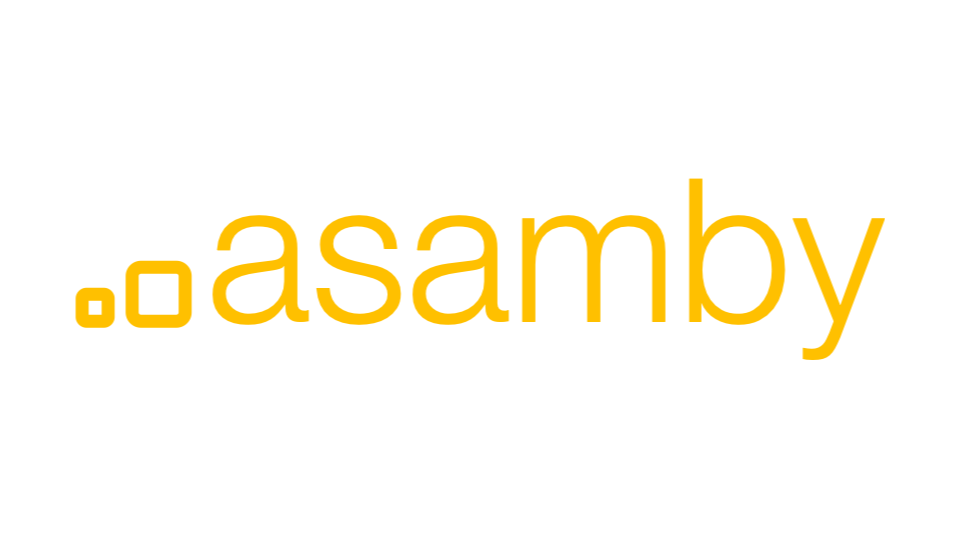From Project Over Retainer to Fractional COO: How German Asamby Consulting Built Its Final Business Model
Stuttgart, Germany based Asamby Consulting pivoted through 3 different engagement structures in 4 years. Here's how it worked out, and how it affected unit economics and scalability.

In 2018, in a small Stuttgart coworking space smelling faintly of espresso and whiteboard markers, Asamby Consulting was born. The vision was deceptively simple: help growing service businesses get their operational house in order before the cracks became structural failures.
Founder Benjamin Lander, who had spent years in management consulting and operations leadership roles, had seen too many businesses grow fast — and then implode under the weight of their own inefficiencies.
“In a scaling company, everyone’s running forward at full speed,” says Lander. “But if no one’s watching the foundations, things break. Processes, communication, priorities — they just can’t keep up with growth.”
Act I: The Project Era
In its early days, Asamby took a textbook approach. A client would reach out — often in crisis — and the team would swoop in for an 8–12 week project. Deliverables were clearly defined: process audits, SOP documentation, team structure redesigns.
It was high-intensity work. Lander recalls one Berlin-based creative agency whose internal approvals took three weeks on average. “We came in, re-mapped their workflow, cut unnecessary sign-offs, and brought it down to four days,” he says. “It saved them hundreds of billable hours per year.”
The results were good, but the relationships often ended when the project did. And over time, a problem emerged: many of those shiny new processes didn’t stick.
“We’d return six months later and see our work half-abandoned,” says Lander. “Not because clients didn’t care, but because the day-to-day pulled them back into old habits.”
The team began asking a new question: how could they not just fix problems, but stay close enough to prevent them from coming back?
Project-based work posed another internal problem for a small firm: Though priced well with decent margins, it required constant acquisition to backfill the pipeline for when the current project ended.
Act II: The Retainer Shift
By 2020, Asamby had moved into a retainer-based model. Instead of intense one-off sprints, clients would sign up for ongoing monthly support — a blend of process improvements, leadership coaching, and operational troubleshooting.
The shift had immediate benefits. Revenue became more predictable. Relationships deepened. The consulting team could layer improvements over time instead of cramming everything into a few frantic weeks.
For a Toronto-based SaaS marketing agency, this meant evolving from firefighting to proactive planning. “They used to call us only when things went wrong,” Lander says. “On a retainer, we were in the loop early, shaping their quarterly priorities before issues even appeared.”
Unit economics changed as well: At first, the shift from prepaid 5-figure projects to monthly 4-figure retainers resulted in a drop in cashflow. But soon enough, the steady and planable revenue meant that the team could now start building the business, instead of constantly replacing expired projects with new ones.
Yet the model had a ceiling. As much as Asamby became trusted advisors, they were still outsiders. Strategic decisions happened in boardrooms where they weren’t present. Implementation was still handed off, sometimes diluted or delayed.
“We could recommend a change, but we couldn’t enforce it,” says Lander. “The gap between strategy and execution was still too wide.”
That gap became the seed for Asamby’s next pivot.

Act III: Becoming the Fractional COO
In 2022, the firm piloted its first fractional COO engagement — embedding a senior operations leader into a client’s executive team on a part-time but fully integrated basis.
It was a risk. Fractional executive models were gaining traction in North America, but they were still rare in Germany. Clients might not understand it, or might see it as overkill.
But the first test case — a €5M e-commerce company selling home goods internationally — quickly erased any doubts. As a fractional COO, Lander joined the weekly leadership meetings, co-managed department heads, and oversaw key initiatives from inside the organization.
Within six months:
- Fulfillment errors dropped 42% after a warehouse reorganization.
- Team turnover fell from 28% to 12% after reworking role definitions and career paths.
- The founder regained 15 hours per week previously lost to operational firefighting.
The success snowballed. By the end of 2023, 70% of Asamby’s revenue came from fractional COO work.
“When you’re part of the leadership team, you can steer the ship instead of just suggesting where it should go,” says Lander. “It’s the difference between being a coach on the sidelines and being a player on the field.”
Building an International Footprint
From its Stuttgart roots, Asamby now serves clients from Toronto to Tel Aviv. The firm focuses on service businesses between $2M and $20M in annual revenue — companies big enough to have real operational complexity, but not yet large enough to afford a full-time COO with the right skill set.
The team is fully remote, spread across Europe, North America, and Asia, enabling round-the-clock availability. “If something breaks in New York at 9 a.m., someone on our team is awake and fixing it before the European afternoon,” says Lander.
This international reach has shaped the firm’s approach. German clients often want process rigor and risk minimization, while North American clients tend to prioritize speed and scalability. The fractional COO role allows Asamby to balance both, adapting playbooks to fit cultural and market realities.
Stories from the Field
A few recent examples highlight the variety of Asamby’s work:
- The Scaling Consultancy — A UK-based management consultancy grew from 15 to 45 staff in 18 months. Chaos ensued. As fractional COO, Asamby restructured reporting lines, introduced OKRs, and set up a central project management system. Within a year, utilization rates improved by 18% and client delivery times shortened by 22%.
- The Overwhelmed Founder — A New York manufacturing company’s founder was spending 70% of his week on operational tasks. Asamby built a middle management layer, streamlined procurement, and implemented a dashboard of leading KPIs. The founder now spends most of his time on sales and partnerships — and revenue is up 30% year-over-year.
- The Agency with a Bottleneck — A Canadian creative agency’s project approvals stalled in the CEO’s inbox for days. By delegating authority, setting approval SLAs, and reconfiguring workflows, Asamby cut project lead time by 35% without sacrificing quality.
Lessons from the Journey
Lander sees Asamby’s evolution as a case study in listening to the market and evolving accordingly.
1. Start Broad, Then Narrow
“Our project phase taught us where the real pain points were,” Lander says. “If we had tried to start as a fractional COO firm, we wouldn’t have known enough about our ideal client.”
2. Follow the Client’s Pain
Retainers happened because clients wanted ongoing help. Fractional COO happened because they needed someone inside their business, not just advising from outside.
3. Integrate to Create Lasting Impact
The closer Asamby gets to the decision-making table, the greater the results. “Advice is cheap. Implementation is where the value is created,” Lander notes.
The Competitive Edge
Fractional COO isn’t the only offering in the market, but Asamby claims its differentiator is operational depth plus global flexibility. Many fractional executives are career COOs working solo. Asamby brings a team — analysts, process specialists, and project managers — behind the lead consultant.
This model means the fractional COO can focus on high-value leadership, while the support team executes at speed. “If I need a full customer service process redesigned, I don’t have to do it myself,” says Lander. “Our back-end team handles it in parallel.”
Profitability in meaning over scalability
One severe impact the pivot to Fractional COO services had was wishing farewell to a scalable business model.
“Even more than before, growth is now capped by finding excellent operations leaders. Fractional COO engagements by design are tailored to what's going on at our clients businesses. You can't scale that. But the impact and profitability this offer creates more than compensate for it.”
Looking Ahead
The next frontier for Asamby is technology. The firm is developing AI-powered operational dashboards that give clients real-time visibility into performance metrics, process bottlenecks, and predictive risk alerts.
“Operations is moving from reactive to predictive,” Lander says. “The COO of the future will combine human leadership with AI-driven insight. That’s where we’re going.”
Asamby is also considering building sector-specific playbooks — ready-to-deploy frameworks for industries like creative agencies, consultancies, and manufacturing — to accelerate onboarding and impact.
Final Word
From a two-person team in Stuttgart to an international firm shaping the operational heartbeat of companies worldwide, Asamby’s path has been one of iterative pivots.
Project work built credibility. Retainers built relationships. Fractional COO built real operational influence.
“We didn’t find our final model in a brainstorming session,” says Lander. “We built it, one client at a time, by listening, adapting, and getting closer to where the real work happens.”
If there’s a takeaway for other service firms, it might be this: don’t be afraid to outgrow your own business model. Sometimes the next version of your company is waiting inside your current client list — you just have to step closer to see it.

